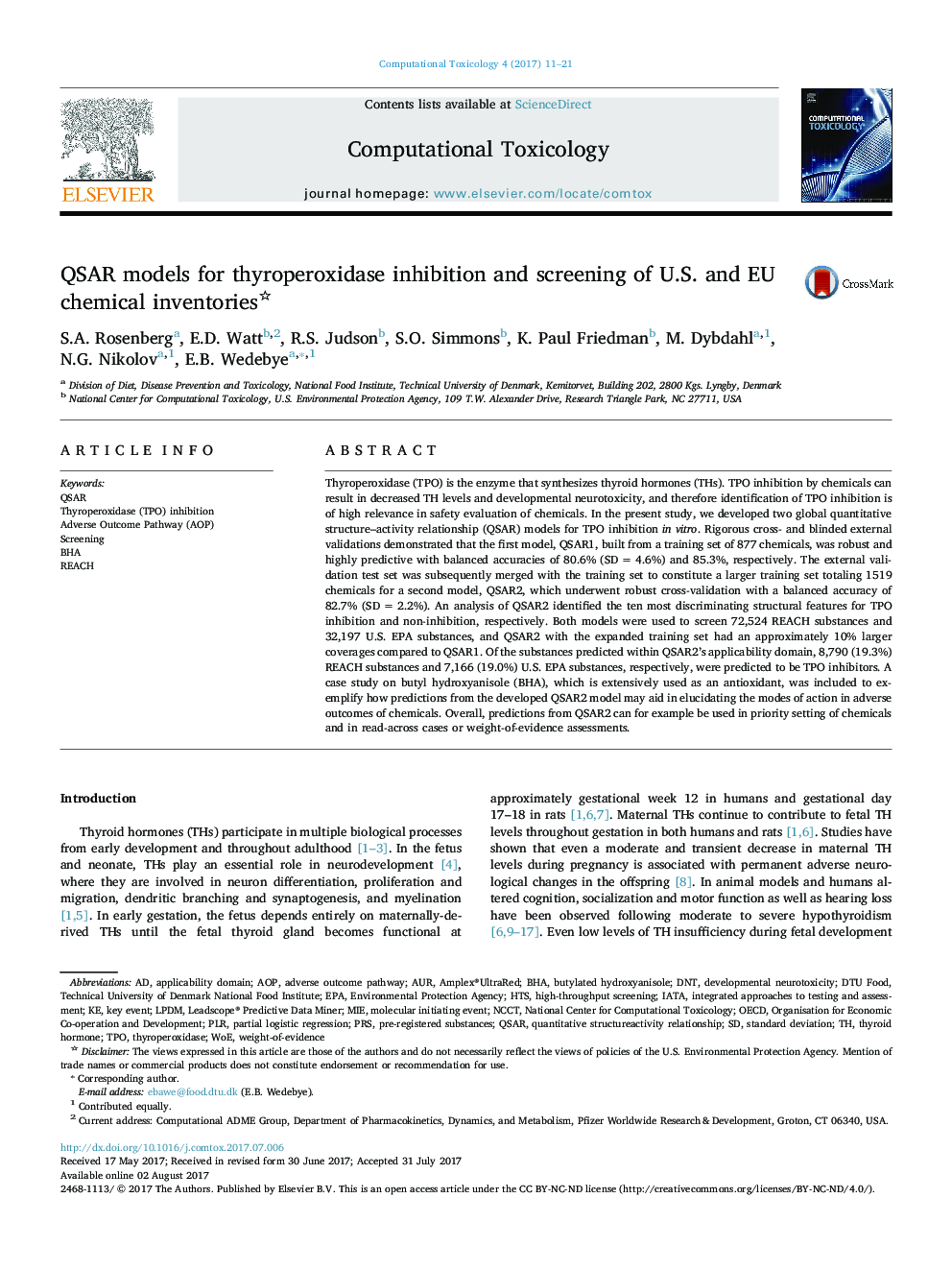| کد مقاله | کد نشریه | سال انتشار | مقاله انگلیسی | نسخه تمام متن |
|---|---|---|---|---|
| 5517321 | 1543162 | 2017 | 11 صفحه PDF | دانلود رایگان |

- Development of two QSAR models for TPO inhibition.
- Highly performing and robust models according to cross- and external validations.
- Predictions of two large U.S. and EU chemical inventories for TPO inhibition.
- Identification of structural features associated with TPO inhibition.
Thyroperoxidase (TPO) is the enzyme that synthesizes thyroid hormones (THs). TPO inhibition by chemicals can result in decreased TH levels and developmental neurotoxicity, and therefore identification of TPO inhibition is of high relevance in safety evaluation of chemicals. In the present study, we developed two global quantitative structure-activity relationship (QSAR) models for TPO inhibition in vitro. Rigorous cross- and blinded external validations demonstrated that the first model, QSAR1, built from a training set of 877 chemicals, was robust and highly predictive with balanced accuracies of 80.6% (SDÂ =Â 4.6%) and 85.3%, respectively. The external validation test set was subsequently merged with the training set to constitute a larger training set totaling 1519 chemicals for a second model, QSAR2, which underwent robust cross-validation with a balanced accuracy of 82.7% (SDÂ =Â 2.2%). An analysis of QSAR2 identified the ten most discriminating structural features for TPO inhibition and non-inhibition, respectively. Both models were used to screen 72,524 REACH substances and 32,197 U.S. EPA substances, and QSAR2 with the expanded training set had an approximately 10% larger coverages compared to QSAR1. Of the substances predicted within QSAR2's applicability domain, 8,790 (19.3%) REACH substances and 7,166 (19.0%) U.S. EPA substances, respectively, were predicted to be TPO inhibitors. A case study on butyl hydroxyanisole (BHA), which is extensively used as an antioxidant, was included to exemplify how predictions from the developed QSAR2 model may aid in elucidating the modes of action in adverse outcomes of chemicals. Overall, predictions from QSAR2 can for example be used in priority setting of chemicals and in read-across cases or weight-of-evidence assessments.
Journal: Computational Toxicology - Volume 4, November 2017, Pages 11-21